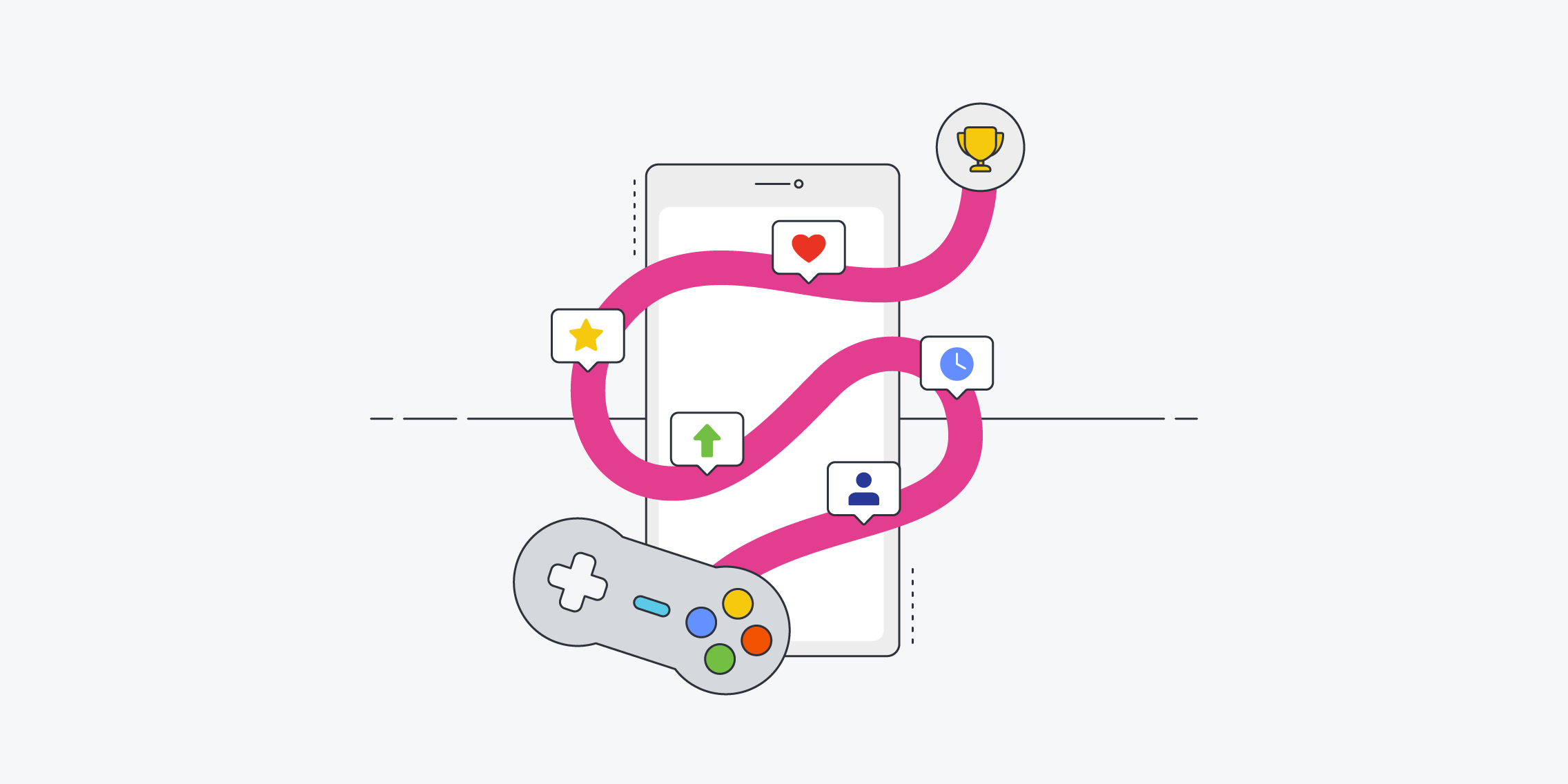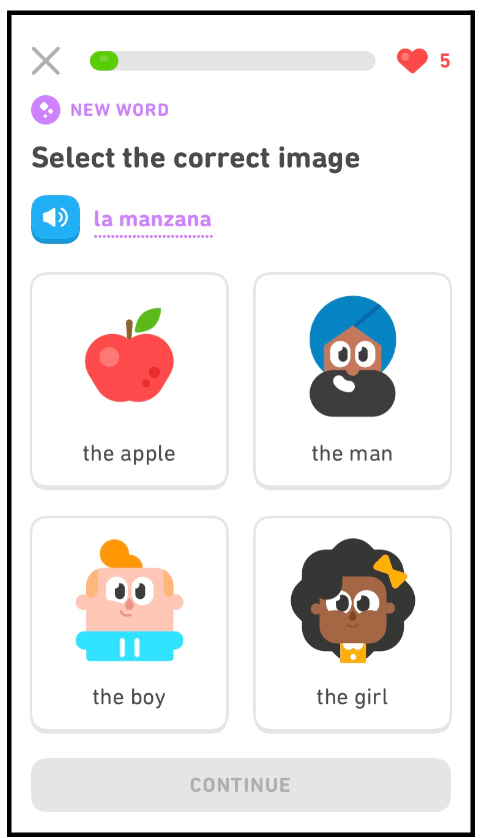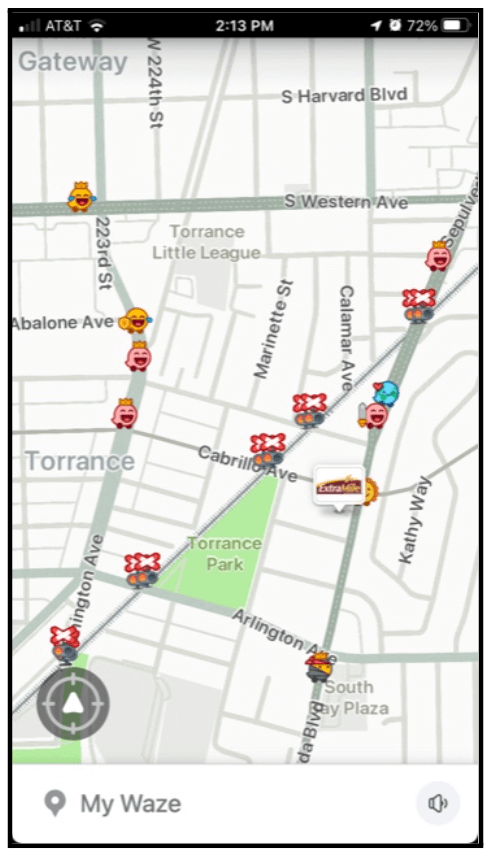Gamification in UX has become a major trend, and it’s easy to understand why. Games are hugely motivating, and they help us learn new things and unwind after a long day.
So it’s no wonder UX designers have applied the fun and excitement of games to enhance their own projects. In this article, you’ll see exactly how UX designers use gamification in their work.
We’ll explore the following:
- What is gamification?
- Why is gamification important in UX?
- What are the benefits of gamification in UX?
- What are the main challenges of gamification in UX design?
- Great examples of gamification in UX
- How to create engaging user experiences with gamification
Let’s jump in.
What is gamification?
Gamification may take its cues from games, but game design and gamification barely relate. While game design has to do with making a game, gamification has to do with designing systems that engage and change user behaviour.
Thus, gamification allows gameplay elements and mechanics to be inserted into non-game environments, such as mobile applications or websites, to engage users.
Gamification incentivizes users to achieve goals and get rewards. For example, completing a form to open a bank account is tedious but if you can see your progress or receive encouragement throughout the process, you’re more likely to stick with it.
Why is gamification important in UX?
UX designers are always looking for ways to delight and engage their users, and gamification is a highly effective technique for doing so. Users are able to experience fun in apps and websites that might otherwise lack resonance for them.
Incorporating game elements into a product can help UX designers increase engagement and adoption, motivating users to achieve goals and overcome negative associations they may have. This encourages users to engage with the system because they want to, not because they have to. This creates a major incentive for UX designers to use gamification in UX designs and get it right.
What are the benefits of gamification in UX?
Gamification can add great value to many websites and apps. Here are the main benefits of gamification:
Gamification boosts engagement
One of the biggest benefits of gamification is its ability to boost user engagement. Gamification can attract new users and retain existing ones by keeping them engaged. This increases the company’s bottom line and ensures that their customers are loyal. Gamifying your UX can also increase the amount of time spent on your platform.
Evokes motivation
Games are hugely motivating. Many people postpone sleep in order to see what’s next in the game. Gamification can be similar. Gamification elements, such as badges, stickers, points, and challenges can evoke the desire to achieve a certain goal. Gamification evokes motivation through these game elements.
Gamification encourages friendly competition
Competing against others helps users complete tasks and achieve their goals. Even if you don’t have any friends to compete against, seeing that you achieved something and got a prize can be highly motivating. Elements like leaderboards, streaks, and words such as “you passed X” can encourage users to compete.
Gamification in UX is the secret sauce to great a great user experience. It helps boost customer retention and increases the lifetime value of the app or website. And while many companies already have products that they don’t want to tear down just to include gamification, you can overlay elements of gamification, like leaderboards and badges, on them to improve their UX.
What are the main challenges of gamification in UX design?
That said, you can’t just put any gaming element in a website or app and expect positive returns. Gamification is not a one size fits all solution. Trophy-like rewards may work for an app where friends compete, but they won’t work for a banking app where rewards should be more subtle. Here are some of the main challenges of gamification in UX design:
Gamification only works if it’s intentional
Gamification won’t work if the rewards are just window dressing. If a user is given a badge for reading news but doesn’t have any real world achievement to show for it, the badge isn’t a real reward.
On the other hand, receiving a badge for achieving a weekly exercise streak is meaningful because it’s a symbol of their work on their fitness. If points and badges don’t provide motivation over time, gamification has failed.
Gamification should be voluntary
Users shouldn’t feel like they’re being controlled, and therefore UX designers shouldn’t push them into specific experiences. Instead, subtle prompts that users can find by themselves put users in control of their behaviour.
Gamification shouldn’t be a requirement
If the user isn’t willing to accomplish the task or the task isn’t easy to accomplish from the user’s perspective, gamification can be a nuisance. For example, surveys with long-winded, repetitive, or overly invasive questions won’t be made more attractive simply by incorporating gamified elements.
Great examples of gamification in UX
Duolingo
Duolingo is different from the foreign language lessons you had in school. While those lessons were a bore, Duolingo uses the power of gamification to help people learn a second language.
The app lets you set a learning goal from a “casual” 5 minutes/day to an “intense” 20 minutes/day and earn rewards as you complete tasks. Some of these rewards even let you skip a day and keep your streak going. Duolingo manages to meet the need for motivation in bite-size chunks that get people learning a language.
Waze
Waze is an app that helps users find the fastest, most efficient way to get anywhere, but a huge part of their success has to do with gamification. They provide traditional directions, yes, but they also have users provide road updates, including crashes, hazards, and gas prices.
For example, if you report a crash, you can say whether it’s major, minor, or on the other side of the road, and you can include a picture and additional details. Each time you do this you get a certain number of points, usually between 6 and 8. Not only that: Waze also gives you points for driving with the app running.
The user may become a Waze Warrior or Waze Knight by using the points, but the real satisfaction is knowing you helped people and have been rewarded for it.
How to create engaging user experiences with gamification
Gamification can clearly help your website or app thrive, but it must be deployed with intelligence. Gamification can’t be an afterthought. Here’s how s to create engaging user experiences with gamification:
1. Understand the task
Picking a few arbitrary elements to gamify your user experience won’t do the trick. You need to pick elements for the right reasons. So begin by identifying a goal that meets a need. For example, your goal may be to get more people to use your app to buy groceries.
Next, you’ll want to set a relevant mission for your app with gamification in mind. So to get more people to use your app to buy groceries, you may include badges that offer discounts on certain items.
You need to create a gamification system that works for you and your users. If only you and your company are using the system, something is wrong.
2. Make user onboarding interactive
Onboarding a user to your app or website means you’re essentially teaching them about your product or service. This is the first thing they’ll do and it’s a learning process that works great with gamification. Instead of making them read long, dense blocks of impenetrable text, lead your users through the process in a fun and delightful way. This makes a great first impression and will get the user on your side.
3. Introduce elements of gamification
Once the user has been onboarded, you can enrich their journey through your app or website with elements of gamification. This will include small tasks that they can complete easily but will result in some kind of reward. For example, you might receive a certain number of points for completing a particular task.
Whether its points, competitions, levels, or leaderboards, users will be more likely to stay engaged and on track through the use of gamification elements.
4. Motivate with rewards
Winning releases dopamine in the brain, so make sure the user knows they’ve won with rewards, badges, or points. Make sure the user feels rewarded after they’ve completed a task and they’ll be more motivated to spend time on your app or website.
If you’d like to learn more about gamification in UX, take a look at this post: From no design background to a fun and fulfilling career with Duolingo’s Charlotte Chen.







